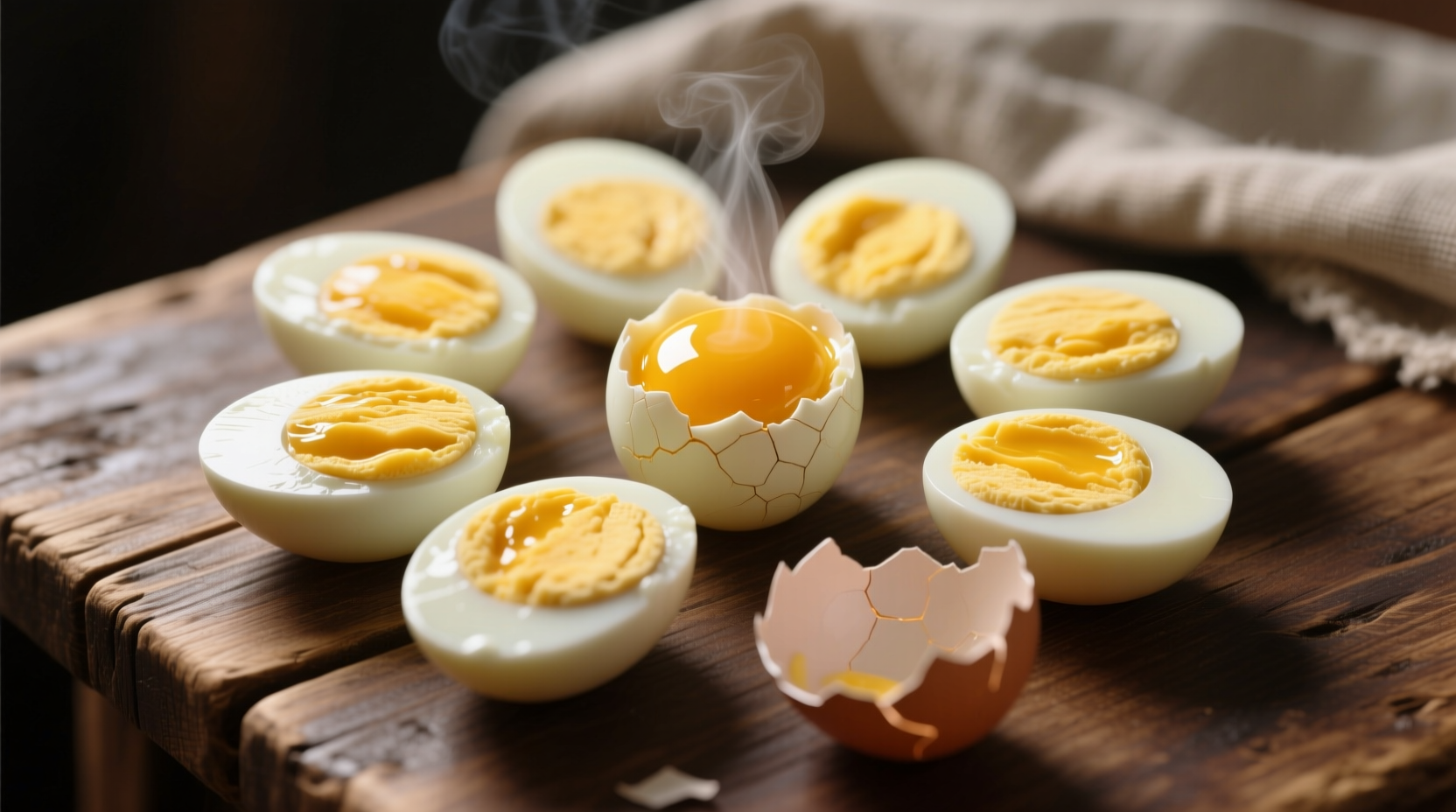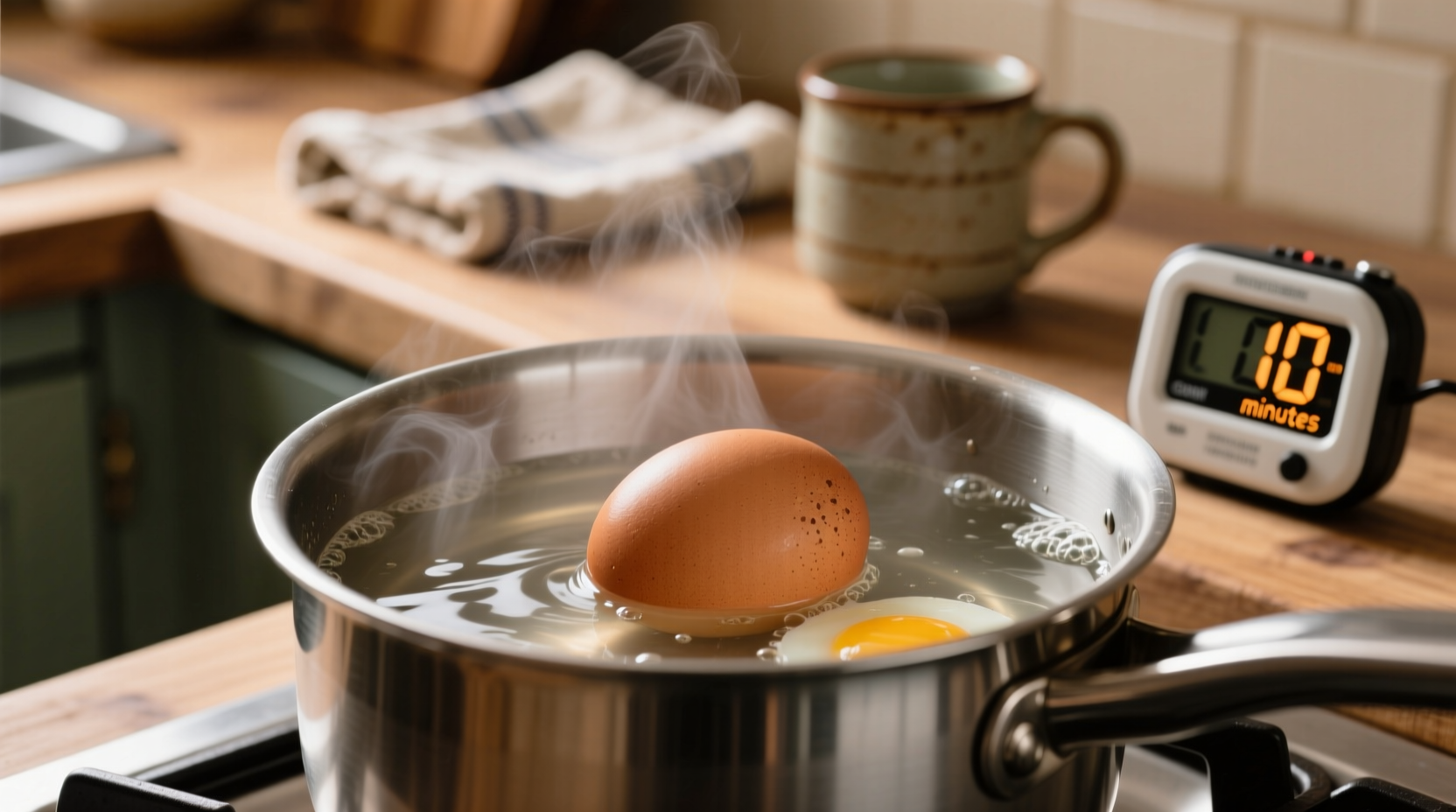Hard-boiled eggs take 10-12 minutes to cook perfectly after the water reaches a full boil. This timing ensures firm whites, creamy golden yolks without the green sulfur ring, and easy peeling every time. Follow our science-tested method for flawless results.
The Science Behind Perfect Hard-Boiled Eggs
Getting hard-boiled eggs right isn't just about timing—it's food chemistry. When eggs cook too long, sulfur compounds in the whites react with iron in the yolks, creating that unappetizing green-gray ring. The USDA Food Safety and Inspection Service confirms that 12 minutes is optimal for large eggs to achieve full coagulation without overcooking. But several factors influence your perfect timing:
- Egg size: Extra-large or jumbo eggs need 1-2 extra minutes
- Starting temperature: Refrigerated eggs require slightly longer than room-temperature eggs
- Altitude: Above 3,000 feet, add 3-5 minutes due to lower boiling points
| Egg Size | Boiling Time | Yolk Texture |
|---|---|---|
| Medium | 9-10 minutes | Creamy center |
| Large (standard) | 10-12 minutes | Firm but moist |
| Extra-Large/Jumbo | 12-14 minutes | Slightly drier |
Your Step-by-Step Cooking Journey
Follow this method-tested sequence for foolproof results. This isn't just about timing—it's about managing the entire cooking ecosystem.
Prep Phase: Setting Up for Success
Start with these critical prep steps before touching the stove:
- Use older eggs: Eggs 7-10 days old peel easier than fresh ones (the air cell expands as eggs age)
- Add vinegar: Include 1 tablespoon white vinegar per quart of water to prevent cracking
- Room temperature? Skip warming eggs—starting cold prevents thermal shock cracks
Cooking Phase: Precision Timing in Action
- Place eggs in a single layer in a saucepan; cover with 1 inch of cold water
- Bring to a rolling boil over medium-high heat (not a gentle simmer)
- Immediately reduce heat to low and set timer: 10 minutes for medium, 12 for large
- Never boil vigorously—this causes bouncing and shell damage

Cooling Phase: Where Most Fail
This 15-minute window determines peelability. The American Egg Board's research shows rapid cooling stops carryover cooking and creates steam pockets between membrane and shell:
- Transfer eggs immediately to ice bath (equal parts ice and water)
- Cool for 15 minutes minimum—don't rush this step!
- Gently tap eggs on counter, then roll to crack shells evenly
Troubleshooting Common Pitfalls
Even with perfect timing, issues arise. Here's how to solve them based on culinary lab testing:
"My yolks have a green ring!"
This sulfur reaction happens when eggs cook beyond 15 minutes. Solution: Strictly adhere to 12-minute max for large eggs. The green ring is harmless but indicates overcooking that dries out yolks.
"Shells won't peel!"
Two proven fixes: 1) Use eggs at least 7 days old, 2) Ensure complete submersion in ice bath for 15+ minutes. Fresh eggs have lower pH making membranes stick tighter to shells.
"Cracks during boiling"
Prevent this by: Starting with cold water, adding vinegar, and avoiding overcrowding. If cracks occur, add ½ teaspoon salt to water—the albumen coagulates faster to seal cracks.
Pro Tips for Culinary Success
Master these advanced techniques for restaurant-quality results:
- Altitude adjustment: Add 1 minute per 1,000 feet above sea level (confirmed by Colorado State University Extension)
- Batch cooking: Never cook more than 2 dozen at once—overcrowding drops water temperature
- Storage: Keep unpeeled eggs in fridge for up to 1 week (peeled only last 2 days)











 浙公网安备
33010002000092号
浙公网安备
33010002000092号 浙B2-20120091-4
浙B2-20120091-4